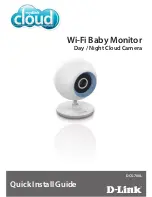
6
2-2. Warning cases
2-3. Precautions
WARNING
•
Before turning on the monitor, always check that the voltage is compliant with the specifications.
Operating on an unstable power supply may cause malfunctions.
•
When the gas adjustment is performed, never fail to perform the air (zero) calibration in fresh air.
•
Do not operate this monitor in a place where combustible/explosive gases or vapors are present.
Operating the monitor in such an environment will lead to extreme dangers.
•
Issuance of a gas alarm indicates that there are extreme dangers. Take proper actions based on
your judgment.
•
Perform span adjustment at fixed intervals.
•
Do not run the power cable and remote sensor cable of the monitor in parallel with cables of
high-frequency or high-voltage and other device's power cables. It may cause malfunctions.
•
If a cable of high-frequency or high-voltage and the power cable need to intersect with each other,
it should be orthogonally connected.
•
When wiring, be careful not to apply any stresses on the cables by pulling, tightening or twisting,
etc.
•
Do not disassemble/modify the monitor. It may invalidate the warranty of the performance.
Changing the settings without understanding them may cause alarm malfunctions. Please use the
monitor properly in accordance with the operating manual.
•
Do not use the monitor with it attached to a control device, equipment, etc.
CAUTION
•
Do not use a device, such as a transceiver, which transmits a radio wave near the monitor or its
cables. It may affect the measurement. If a transceiver or other radio wave transmitting device is
used, it must be used in a place away from the monitor where it disturbs nothing.
•
Restarting the monitor within five seconds after turning it off may cause errors.
•
This is not a control unit. It is not allowed to use the external output of the monitor to control other
units.
•
This is a safety unit. Never fail to perform a regular maintenance to ensure safety. Continuing to use
the monitor without performing maintenance will compromise the sensitivity of the sensor, thus
resulting in inaccurate gas detection.
•
Do not pick the sensor or buzzer opening with a sharp-pointed item. The unit may cause
malfunction or get damaged, possibly resulting in incorrect measurements.
•
Do not let the monitor draw in water. Do not install the monitor in a place where the monitor may get
wet. Ignoring this may cause malfunction because the monitor is not water- or drip-proof.
•
This is a precision device. Do not give strong shock or vibration to the monitor.
•
When the case is opened for wiring or other operation, do not touch inner parts. When wiring, be
sure that excessive pressure is not applied to the power cable and remote sensor cable.
•
Do not block the vent for the sensor.







































